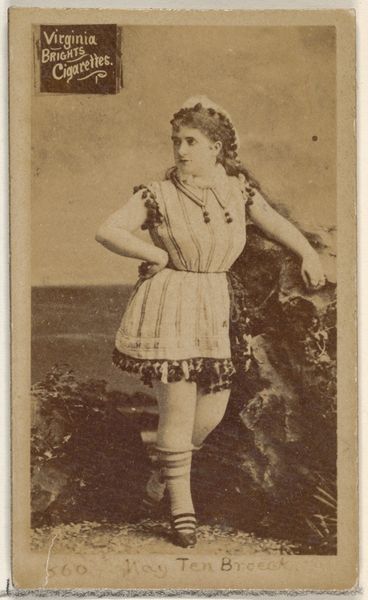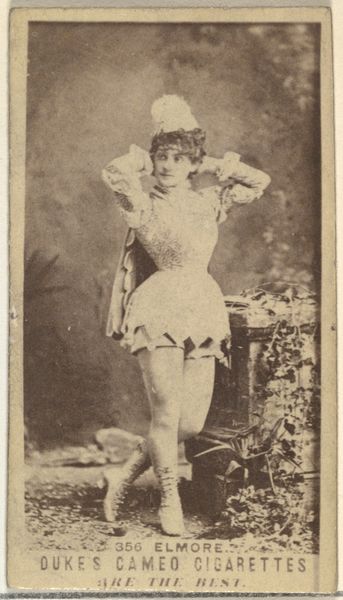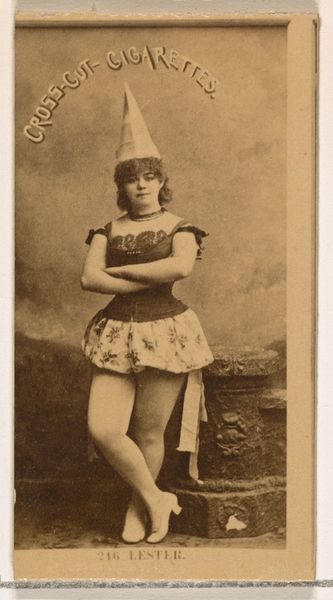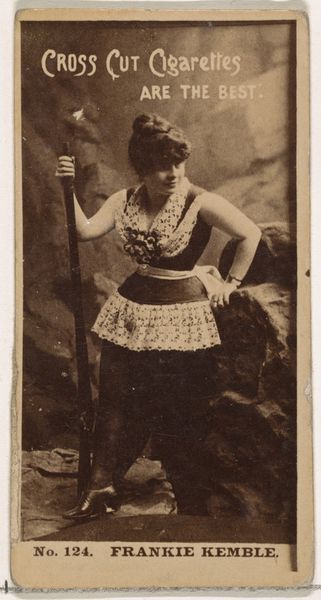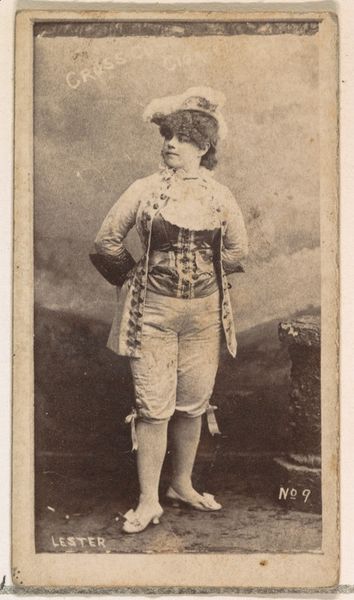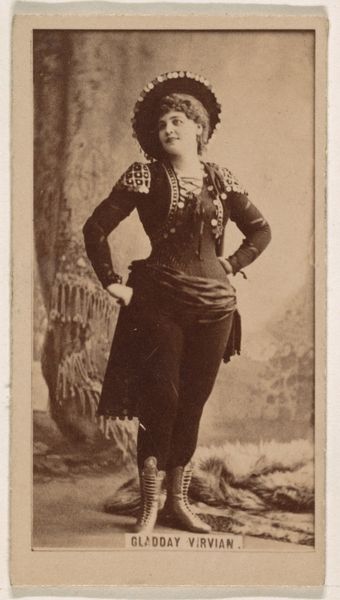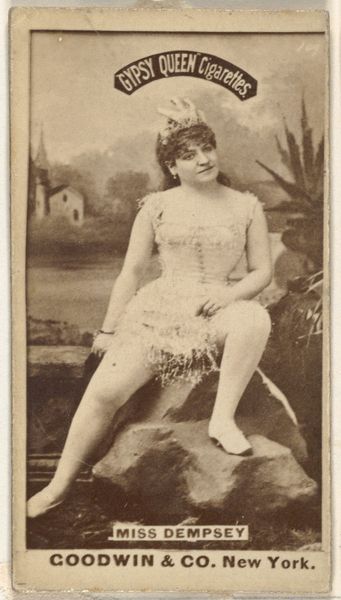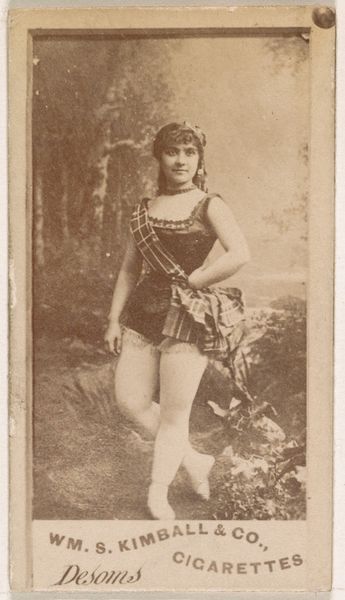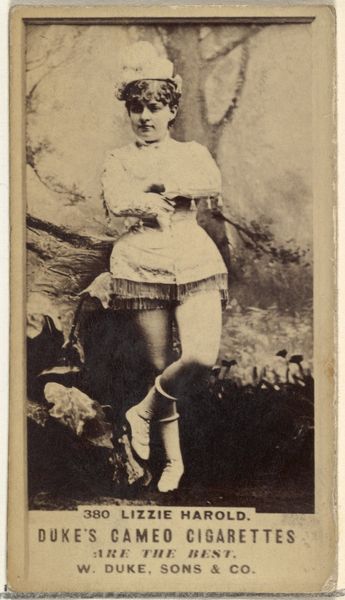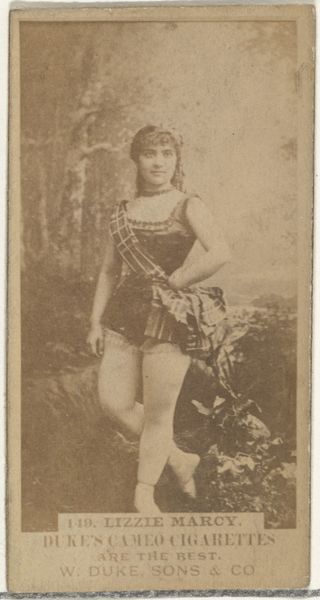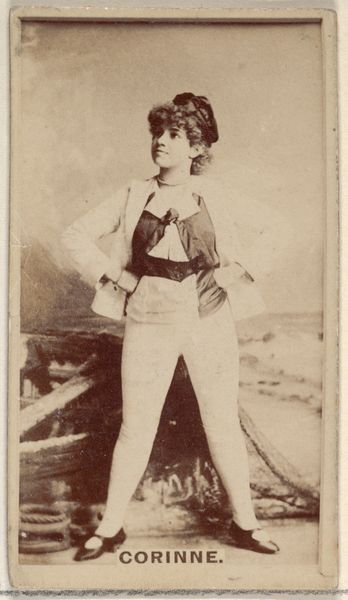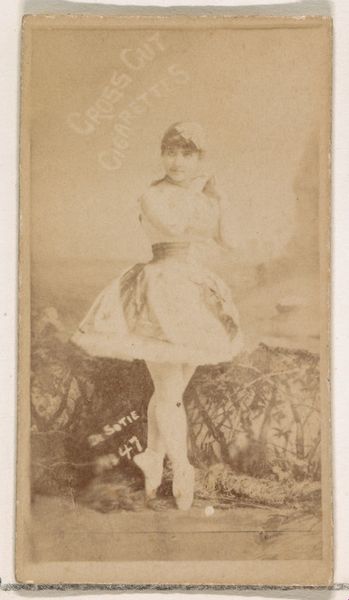
Card Number 147, Alice Harrison, from the Actors and Actresses series (N145-1) issued by Duke Sons & Co. to promote Cross Cut Cigarettes 1880s
0:00
0:00
print, photography, collotype
#
portrait
# print
#
photography
#
collotype
#
19th century
Dimensions: Sheet: 2 1/2 × 1 3/8 in. (6.4 × 3.5 cm)
Copyright: Public Domain
Editor: This is card number 147 from the "Actors and Actresses" series, featuring Alice Harrison, dating back to the 1880s. It's a collotype print created by W. Duke, Sons & Co. as a promotional item for Cross Cut Cigarettes. It’s interesting to see a performer represented on a cigarette card; it feels a bit disconnected from today's marketing. What can you tell me about its context? Curator: It’s precisely that sense of disconnect that makes it so interesting, isn't it? Consider the explosion of mass media in the late 19th century. Tobacco companies were eager to capitalize on celebrity culture to move product, using photography to turn actors like Alice Harrison into easily consumable images. But let’s not think of this as purely innocent admiration for the stage; this is early advertising playing on aspirational ideals to manipulate public sentiment, a new mode of power, really. Do you think this portrait reinforces or challenges norms for women in that period? Editor: It’s hard to say. She seems self-possessed with her arms crossed, not demure. On the other hand, her stage costume seems quite revealing. Was that common? Curator: Exactly. Her confident pose and direct gaze may signal a sense of agency, but her clothing tells a more complicated story. The very public nature of theatrical celebrity intersected with the burgeoning commercial marketplace created both opportunities and challenges for female performers. Such imagery helped establish celebrity, but also fueled societal expectations, and judgements, of women in the public sphere. This card, then, becomes a microcosm of Victorian attitudes toward women, performance, and consumerism. Editor: I see what you mean. It’s less a celebration of art and more a snapshot of the pressures of fame and commerce on performers at that time. Curator: Precisely. Examining such objects lets us understand the forces that shape not just artistic creation, but social identities and public perceptions. Editor: This has totally reshaped my understanding; I hadn't thought about it that way. Thank you.
Comments
No comments
Be the first to comment and join the conversation on the ultimate creative platform.
